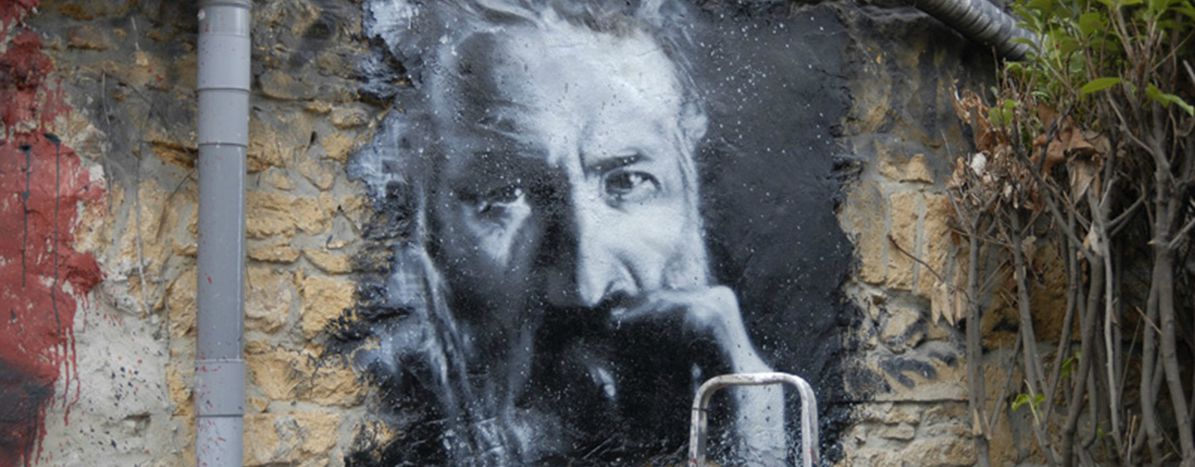
Picking up the pieces: The conundrum of cultural heritage
Published on
In the context of an ever-changing Europe, many believe that holding on to and fighting for cultural heritage is paramount. But what happens when protecting our cultural heritage so zealously comes at a cost of someone else's heritage?
The European cultural landscape is experiencing a serious metamorphosis, as evidence has surfaced that some governmental institutions are using national heritage laws to their advantage so as to deprive rightful owners of artworks from their private collections.
In Romania, the state’s pre-emptive right limits the freedom of private ownership of artworks in the National Patrimony, while in the UK many museums are governed by statutes which prohibit them from transferring artworks from their collections to their rightful owners.
Heirlooms up for grabs
In 2012, Constantin Brancusi’s sculpture 'Wisdom of the Earth' was finally returned to its rightful owners, the estate of the architect Gheorghe Romașcu. According to his family’s testimony, Communist authorities shrewdly got their hands on the sculpture under the pretext of borrowing it for an exhibition at the National Art Museum, only to refuse to return it later on.
"The (National Art) Museum produced a number of one-sided documents to attest to a purchase price, none of which being an actual sale contract," says Bogdan Grabowski, the family lawyer. After the 1989 Revolution, the case dragged on for 12 years in court before Romașcu’s heirs succeeded in recovering the statue. However, their happiness was short-lived; just two years later, the State invoked their pre-emptive right over the sculpture’s purchase and began negotiating a sale price with the estate, on the grounds that the work was part of National Patrimony and its rightful place was at the National Art Museum. "This is, to my mind, a rather unfortunate piece of legislation… since it also prevents collectors from bringing works from abroad, because they risk being claimed as Patrimony by the State," Mr. Grabowski adds.
This has sparked heated debates, as the Romanian state’s entitlement to claim a work of art in private possession, which had been bought by a member of the family from Brancusi himself and then hijacked by the Communists, definitely questions the fairness of the situation.
The lost portrait
Cases of works of art taken from their owners under various guises are frequent throughout history. A story that surfaced quite recently and bears great resemblance to the affair surrounding 'Wisdom of the Earth' is that of Matisse’s 'Portrait of Greta Moll.'
Bought from its painter Henri Matisse, 'Greta Moll' embarked on a tumultuous journey from one art collector or museum to another, finally ending up at the National Gallery in London in 1979. Greta Moll's heirs are now trying to reclaim the painting on the grounds that the initial acquisition by a Swiss art collector was not done with the owner’s consent. The National Gallery is refusing to comply, invoking statutory prohibition and insisting that the purchase was in good faith.
Does the end justify the means?
The recurring theme of official arguments in both cases is that the works are of great cultural and historical value in their respective countries.
While in Romania the proprietors' lack of leeway was generated by an unfavourable set of circumtances and a biased piece of legislation, in the UK it appears that the heirs are facing the consequences of a tangled web of commercial transactions which makes the status of the National Gallery’s purchase legally unclear.
Furthermore, the Romanian state’s ambition in recovering 'Wisdom of the Earth' is in sharp contrast with their attitude when it came to other heritage sites in dire need of restoration. Mircea Diaconu, the former Minister of Culture and current MEP, voiced his dissappointment in the "staggering lack of concern over Brancusi culture in Romania," as well as in the fact that "the money spent on the purchase of the statue alone would have been more than sufficient to invest in restoring many other Brancusi monuments, not to mention his birthplace, which are in a disgraceful state."
From Diaconu’s words, the hypocrisy of Romanian authorities is obvious. They claim to care about national heritage, while in reality it’s their own vested interest that prevails. On the other hand, the National Gallery is far more tenacious in preserving its assets. While in Romania there is a lot to work on raising awareness about cultural assets, in the UK such situations are dictated more by national pride.
These cases may be riddled with legal uncertainty, but one thing is crystal clear: governments will never risk setting a precedent in cultural heritage cases. We can hope that they will take the moral high ground and return what is not rightfully theirs, but realistically the states’ ownership of such works serves a greater purpose. It suggests an historical supremacy and exudes power. But if national heritage is a country’s backbone, why should it cripple the heritage of others for questionable gains?



